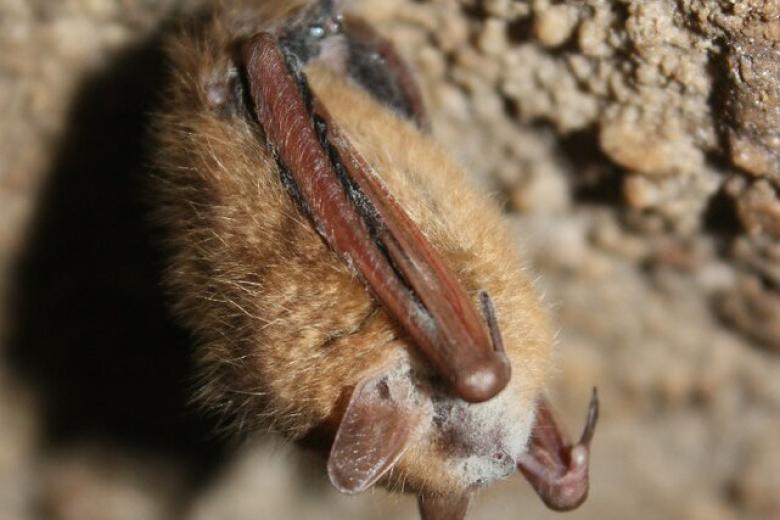White-nose Syndrome detected in New Mexico
Organization:
BLM Office:
Media Contact:

Santa Fe, NM – For the first time, White-nose Syndrome (WNS), a disease of hibernating bats, has been confirmed in New Mexico. Samples from two live bats and two deceased bats were collected in late April from BLM-managed caves in Lincoln and De Baca counties.
Scientific Background:
The two dead bats were confirmed with WNS, one a fringed myotis in Lincoln County, the other a cave myotis in De Baca County. Additionally, wing biopsies from two live cave myotis at the same Lincoln Co. site revealed microscopic lesions consistent with WNS. WNS is caused by an invasive fungal pathogen named Pseudogymnoascus destructans (Pd). Although Pd was previously detected in New Mexico in 2021, evidence of the disease had not been confirmed in the state until now.
WNS is a fungal disease that has killed millions of bats in North America since 2006. A powdery, white fungus grows on the skin of hibernating bats, often on the face, leading to irritation and dehydration. This causes bats to arouse early from hibernation and exhaust fat stores they need to survive the winter, often leading to death.
“With the collaboration of a great team of partners, BLM New Mexico has been monitoring its most significant winter bat caves for evidence of Pd since 2011,” said BLM New Mexico’s Threatened and Endangered Species Program Lead Marikay Ramsey. “We will continue to coordinate with our state, federal, tribal and non-governmental partners to test and implement prevention measures such as restricted access to affected caves to minimize the spread of the disease in New Mexico.”
“Of the almost 30 species of bats known to occur in New Mexico, more than half are known or suspected to hibernate in the state during the winter,” said James Stuart, non-game mammal specialist with the New Mexico Department of Game and Fish. “All these hibernating species are potentially vulnerable to WNS when they spend the winter in caves or mines where the Pd fungus has become established. We don’t yet know to what extent WNS will impact our New Mexico bat populations, but we will continue to support monitoring of bat populations and caves throughout New Mexico for the presence of WNS and Pd.”
Although bats themselves are the primary way the fungus spreads, possible spread by human activity in caves is a major concern. Neither the fungus nor the disease affects humans or pets, but people can help to limit the spread.
State and Federal agencies in New Mexico and throughout the U.S. ask that outdoor enthusiasts help by following these recommendations:
- Respect cave and mine closures.
- Decontaminate footwear and all cave gear before and after visiting or touring caves and other places where bats live.
- Do not touch bats; report dead or sick bats to local agency rangers or wildlife biologists.
- Gear and clothing used in Pd-positive or WNS-infected areas should not be used in areas free of Pd.
- To avoid accidentally transporting bats, check canopies, umbrellas and other outdoor items for any bats that may have roosted in a nook or cranny.
Visit https://www.whitenosesyndrome.org for more information or contact Marikay Ramsey at 505-954-2222.
The BLM manages about 245 million acres of public land located primarily in 12 western states, including Alaska, on behalf of the American people. The BLM also administers 700 million acres of sub-surface mineral estate throughout the nation. Our mission is to sustain the health, diversity, and productivity of America’s public lands for the use and enjoyment of present and future generations.
